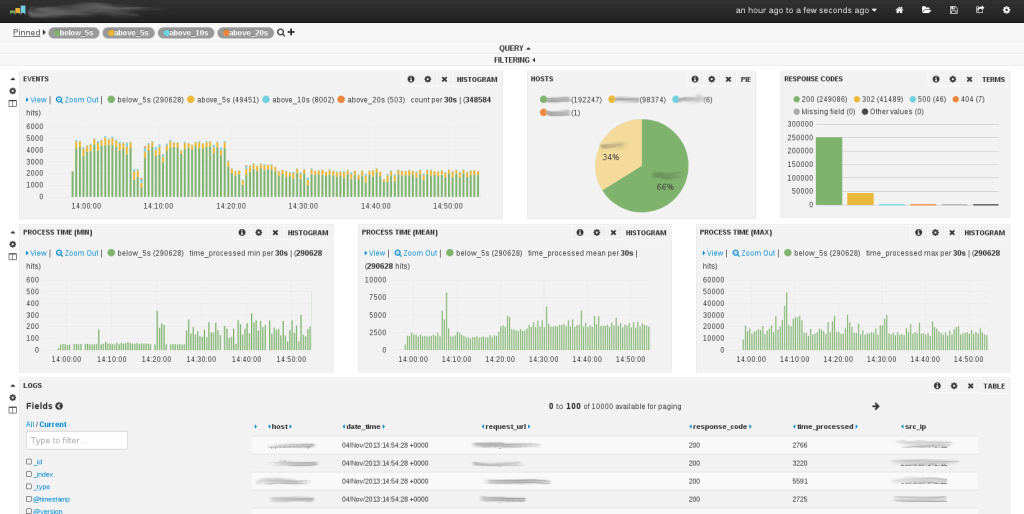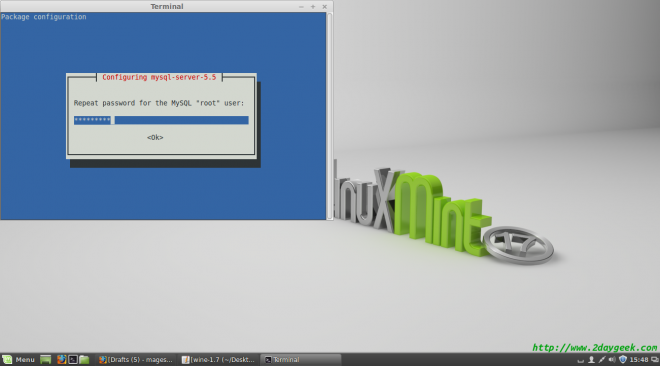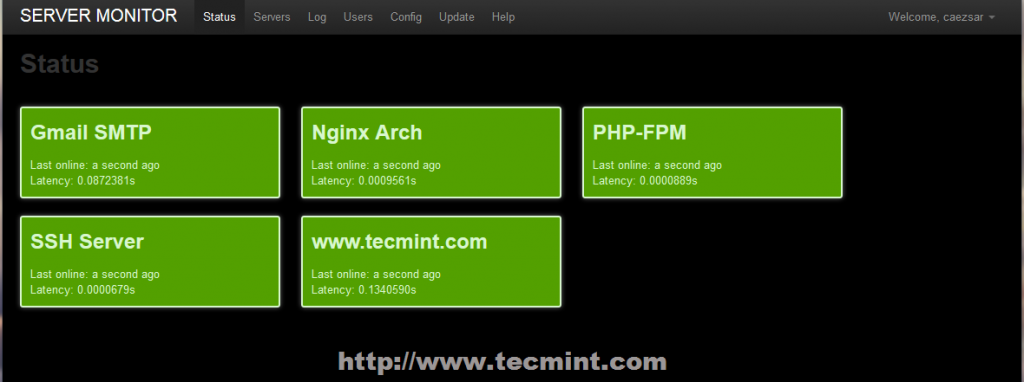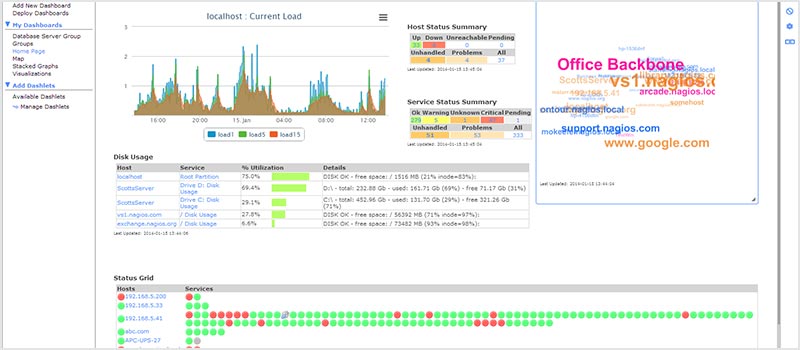

This command can be used as a network packet analyzer or packets sniffer program. Tcpdump is one of the most commonly used Linux commands. As a result, you can use this command to determine which files are currently open. And it comes with an error like “ File is open or in use“. The most important use of this command is when the drive cannot be un-mount when mount/unmount. Open files include all disk files, network sockets, Processes, Devices, and Pipes. The lsof statement is used to display a list of all files and open processes. The following is the most common vmstat command:Īnother utility in Linux/Unix-based systems is the lsof command.

#LINUX WEB MONITOR PHP INSTALL#
To display the number of Virtual Memory Statistics, kernel threads, disks, system processes, interrupts, CPU activity, (I/O Blocks) and I/O blocks are used.īy default, vmstat does not exist on Linux systems and you need to install a package called sysstat to enable it. Vmstat – The amount of virtual memory consumed This command also allows you to view the processes that have the highest amount of memory or CPU usage.įor example, in the image below you can see the output of the Top command. With the Top command, you can see CPU usage, memory usage, Swap Memory, Cache size, Processor buffer size, PID, users, commands, and so on. In fact, the top command in Linux displays a regular list of all Real-Time processes and processes that are active or running. Many server administrators use this command. The top command is very useful for monitoring the performance of Linux/UNIX systems. Recommended Article: Linux Server Monitoring Commands These commands are applicable to a variety of Linux distributions and are very useful for troubleshooting and monitoring Linux servers. For this reason, here are some of the useful commands that are useful for Linux-based systems.

arpwatch – Monitoring Ethernet activities.monitorix – System and Network Monitoring.nethogs – Monitoring network bandwidth per process.monit – Monitoring Linux services and processes.psacct or acct – Monitoring User Activities.iptraf – Lan IP network instant monitoring.vmstat – The amount of virtual memory consumed.In this example, we are going to use port 8080. $ sudo apt-get install git nginx php5-json php5-fpm php5-curlĬonfigure Nginx for linux-dash app by creating /etc/nginx/conf.d/nf as follows. Set up linux-dash on Debian, Ubuntu or Linux Mintįirst, install Nginx web server with php-fpm. Nginx is preferred over Apache web server due to its lightweight engine.
#LINUX WEB MONITOR PHP HOW TO#
In this tutorial, I am going to describe how to set up linux-dash in Nginx web server on Linux.

It is a quick and easy way to set up remote monitoring for personal projects. Simply drop in linux-dash app in an existing web server (e.g., Apache, Nginx), and you are good to go. linux-dash does not come with any backend database for storing long-term statistics. Linux-dash is a web-based lightweight monitoring dashboard for Linux machines, which can display, in real-time, various system properties, such as CPU load, RAM usage, disk usage, Internet speed, network connections, RX/TX bandwidth, logged-in users, running processes etc. If all you need is to check the basic status (e.g., CPU load, memory usage, active processes, disk usage) of a remote Linux server or desktop, consider linux-dash. While there are many production-quality monitoring solutions (e.g., Nagios, Zabbix, Zenoss), boasting of fancy UI, monitoring scalability, comprehensive reporting capabilities, etc., these solutions are probably an overkill for most of us end users. When it comes to monitoring a Linux box, there are more than enough options to choose from. How to monitor a Linux server and desktop remotely from web browser


 0 kommentar(er)
0 kommentar(er)
